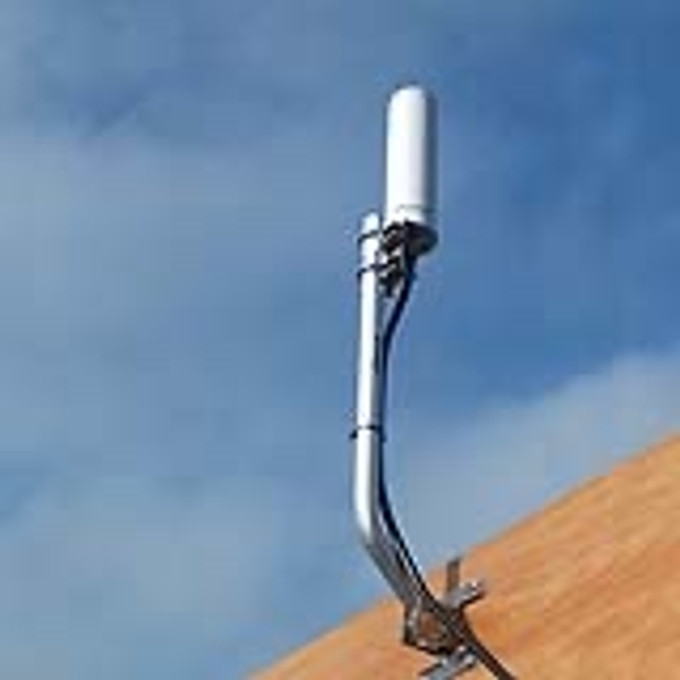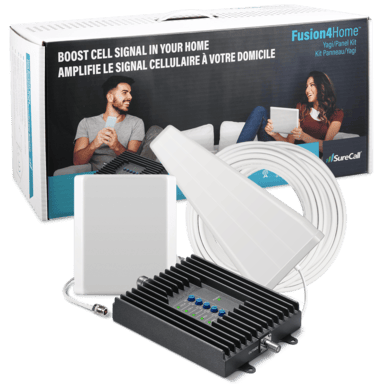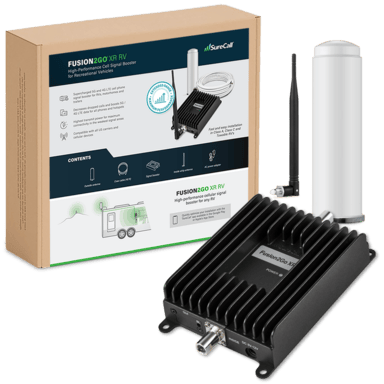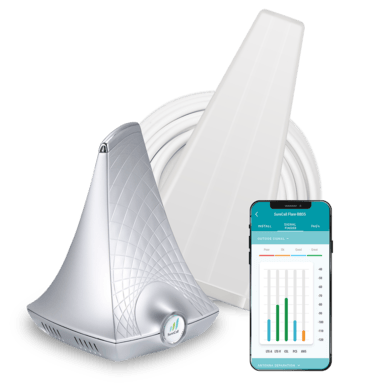
Which Outdoor Antenna is Best for My Cell Signal?
Posted by Dennis Findley on 6th Oct 2017
Use this guide to select an antenna that will give you the best cellular reception inside of your home, office, vehicle or RV, or warehouse.
When installing a cell signal booster to remedy your weak cell signal, there are a couple of key decisions that will impact the performance of your kit. There are only three components to a signal booster kit; an outdoor antenna, an indoor antenna, and the booster. Selecting the most fitting option for each is important to getting the biggest boost for your buck.
This post will give you the information you need to select the best outdoor antenna for you.
First-Thing-First: What Are the Options
- Omni-Directional Antennas: Omni-directional antennas for signal boosters use a receiving pattern most similar to a lantern’s glow, in other words these have a 360-degree reception window. With this reception pattern, omni-directional antennas are able to access multiple nearby cell towers to generate a strong cell phone signal.
- Directional Antennas: Often referred to as “Yagi” antennas, directional antennas get the name “directional” from their signal receiving pattern, which points in one direction and spans about 50-degrees. While this may sound limiting, these are advantageous because of their strength and ability to access far-off cellular towers.
Criteria #1: Cell Signal Strength Outside of the Building
The strength of your cellular signal at any one point outside of your property is a clear identifier of the antenna you will need. For spaces up to 25,000 square feet you can test your signal strength by entering field test mode on your phone. For larger applications, we suggest using an RF Signal Meter.
- 0 to -90 dBm: This range will thrive with an omni-directional antenna. Because of this stronger signal, you don’t need to reach far to find a strong signal to pull in and, for that reason, an omni-directional antenna will be best for you.
- -91 to -105 dBm: This range will require a directional antenna. This means that you will need to tap into a signal that is weaker or quite a bit further away. That being the case, you’ll need an antenna with more focused reception window.
- -106 to -135 dBm: This range covers cell signal strengths that we label as being very poor to nonexistent. SureCall signal boosters have brought perfect cellular clarity for this range, however, this can be a challenging range for any cell signal booster. This being the case we suggest two things; first, use a directional antenna with a stronger booster like a Fusion5X or Fusion4Home and, second, pursue a booster that offers a money-back guarantee, just in case. All SureCall products come with a 3-year warranty and 60-day money back guarantee.
Criteria #2: More than One Cellular Carrier
Depending on your need to support one cell carrier or multiple carriers, you will want to move ahead with different outdoor antennas.
- Multiple Cellular Carriers: Customers who need to fix a weak signal for more than one carrier will be best supported by using an omni-directional antenna. The nature of these antennas allows you to pull in a cell signal from multiple towers, which gives you the ability to boost your signal for any carrier.
- One Cellular Carrier: Customers who have a strong Verizon signal but have a weak AT&T signal inside and outside of the building, for example, would benefit from a directional antenna. Keep in mind that if you already have a strong signal for AT&T outside of the building but not inside, you could also use an omni-directional antenna.
Criteria #3: Number of Antennas on Your Roof
Creating separation between other antennas you have installed on your roof can make a big difference in the level of performance you see from your cell phone signal booster.
- Do you have other antennas on your roof that would be within 30 feet of your signal booster antenna? If your answer is “no,” our installation experts would say you are safe to use either a directional or omni-directional antenna.
- Do you have other antennas on your roof that would be within 30 feet of your signal booster antenna? If your answer is yes, our installation experts suggest using a directional antenna to eliminate interference between your signal booster antenna and your other antennas.
Criteria #4: Space Between Outdoor & Indoor Antennas
When you have two antennas arranged too close together, this can cause interference, which will negatively affect the performance you receive from your signal booster.
- For omni-directional antennas, we suggest having 50-feet of separation between your outdoor and indoor antennas. Because of the antenna’s 360-degree window of reception it is best to have more space between your antennas to eliminate any potential interference between the two.
- For directional antennas, we suggest having 30-feet of separation between your outdoor and indoor antennas. The 50-degree window of reception minimizes the amount of potential interference between your indoor and outdoor antennas and reduces the amount of separation required.
Summary
The ideal application for an omni-directional antenna would be to have a -0 to -90 dBm signal outside of the building, a need to improve a weak signal for multiple carriers, more than 30-feet of space on your roof from other antennas, and 50-feet of separation between your indoor and outdoor antennas.
The ideal application for a directional antenna would be to have a -91 to -135 dBm signal outside of the building, a need to improve a weak signal for only one carrier, less than 30-feet of space on your roof from other antennas, and 30-feet of separation between your indoor and outdoor antennas.
Keep in mind that these are ideal applications and, in most cases, the signal strength outside of the home, office, commercial space, or building will be the most indicative of the antenna best suited for you. Still have questions? Contact an install expert.
Fusion2Go XR RV Cell Phone Signal Booster
Fusion4Home Yagi Panel Indoor Signal Booster



